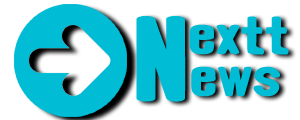Sales forecasting is a crucial element of any business strategy, but SaaS businesses must have this forecasting to be accurate. In a SaaS world that is characterized by an escalating number of revenue models that are reoccurring, and where the cancelation rates of customers have become a key indicator, the ability to accurately predict future sales makes or breaks a business. Let’s have a look into the complexities of SaaS sales forecasting and how companies can handle this process skillfully.
Understanding SaaS Sales Dynamics
Let’s explore the forecasting methodologies after you understand the distinct sales processes in SaaS. Unlike the product-based business models of traditional companies, SaaS companies are based on subscription models, such as recurring monthly or annual subscriptions. This recurring revenue stream presents both opportunities and challenges for sales forecasting:
Predictable Revenue Streams: A major advantage that SaaS companies gain is their ability to generate stable revenue flows through subscription renewals and expansions. This predictability forms a basis for sales forecasting, allowing organizations to determine future revenues going forward according to the existing customer contracts and the anticipated growth rate.
Churn Management: Customer churn, which is the rate at which subscribers terminate their membership, is one of the key metrics that are being used in the forecasting of SaaS sales. High churn rates can undermine revenue forecasts and growth prospects, which become a concern to SaaS companies even more. Thus, SaaS companies need to reduce churn rates.
Expansion Revenue: On top of acquiring new customers, SaaS companies can increase their revenue by using upselling, cross-selling, and complete commercials in existing accounts Accurate forecasting should also include not only new sales and expansion opportunities but also consider the extent of the upcoming revenues.
Methodologies for SaaS Sales Forecasting
Several methodologies can be employed to forecast sales in the SaaS industry, each with its strengths and considerations:
Historical Data Analysis: Historical sales analysis has been a key defining technique for sales forecasting. By filtering previous patterns, trends, and seasonality, businesses can make predictions for the coming sales. Although it can afford the omission of some details such as the changing market conditions or changes in customer behavior, this technique is quite acceptable.
Pipeline Analysis: Sales pipelines give us insights into the deals we expect to close and determine their success. Businesses can estimate future revenue effectively using the analytical method for the size, stage, and velocity of deals in the pipeline. Especially for short-term forecasting, pipeline analysis is a useful tool but can require corrections when negotiated deals slip or are delayed.
Customer Segmentation: Splitting customers based on parameters like usage habits, subscription levels, and industry segments can give rise to more specified revenue prognostic guidelines. With this knowledge of different customer segments, their specific personalities, and what they are looking for, businesses can adapt their sales strategies and forecasts accordingly.
Churn Modeling: Churn prediction modeling uses historic churn data as well as customer behavior analytics to predict future churn rates. Churn risk can be minimized by recognizing the most critical churn drivers and applying reactionary retention strategies. Thereby, maintaining the revenue stability.
Read also Infinite Inspiration: Harnessing the Power of AI for Image Generation
Best Practices for SaaS Sales Forecasting
To maximize the accuracy and reliability of SaaS sales forecasts, businesses should adhere to the following best practices:
Data-Driven Approach: Build your forecast off of trusty data analytics and insights, not intuition or hunch. Utilize advanced analytics tools and other CRM platforms for convenient and timely sales data tracking and analysis
Cross-functional collaboration: Build collaboration between sales, marketing, finance, and product teams to guarantee accuracy and alignment in assumptions and forecasting numbers. Every department, which has its views and specializations, has been able to supplement and improve forecasting accuracy.
Iterative Improvement: Sales forecasting is an ongoing process and it comes about as a result of continuous successive refinement. Periodically review and adjust forecasts to track actual performance and implementation of feedback from the market, implementing the acquired knowledge to develop better future forecasts.
Scenario Planning: Anticipate various scenarios and contingencies that may impact sales outcomes, such as changes in market conditions, competitive pressures, or product launches. Develop contingency plans and sensitivity analyses to assess the potential impact on revenue forecasts.
Conclusion
In conclusion, SaaS sales forecasting is both an art and a science, requiring a blend of data analytics, market insight, and strategic foresight. By understanding the unique dynamics of SaaS sales, employing appropriate forecasting methodologies, and adhering to best practices, businesses can navigate the complexities of sales forecasting with confidence and precision, driving sustainable growth and success in the ever-evolving SaaS landscape.


